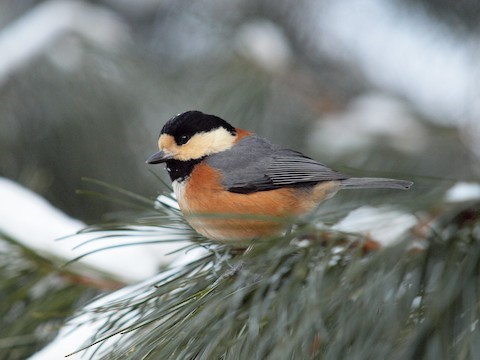Birdfinding.info ⇒ Generally common in forests and woodlands throughout Japan and South Korea. It can be found in some city parks, including Yoyogi Park in Tokyo and Namsan Park in Seoul. One of the most popular cagebirds in Japan, for centuries it was featured in fortune-telling acts performing a trick in which it “takes a coin from the customer, places it in a small chest, rings a bell, takes a written fortune from a miniature shrine, removes the string from the fortune, and carries it back to the customer” (Harrap & Quinn 1995).
Varied Tit
Sittiparus varius
Forests of Japan, Korea, and adjacent islands.
In Japan, resident throughout the four main islands, except northern Hokkaido, and many smaller islands, including the southern Kuril Islands (Shikotan, Kunashir, and Iturup), Jeju, the northern Izu Islands (south to Kozushima), and the larger Ryukyus (Tanegashima, Yakushima, Amami, Tokunshima, and Okinawa).
In mainland Asia, resident throughout the Korean Peninsula west into southern Liaoning, and in pockets of southern Jilin.
Occasionally wanders farther south along the Chinese coast in winter—such as the winter of 2012-13, when many flocks appeared in coastal Jiangsu and Zhejiang. It has also been recorded as a vagrant to Taiwan and Sakhalin.
Introduced populations were established on Kauai in the 1890s and Oahu around 1930 and persisted on both islands until the late 1960s.
Identification
A robust, colorful, harlequin-patterned tit, with a strong, slightly upturned bill, that is unmistakable except for three close relatives that were traditionally considered subspecies, all of which are insular endemics: Owston’s Tit (owstoni) of the southern Izu Islands, Iriomote Tit (olivaceus) of Iriomote and Ishigaki-jima, and Chestnut-bellied Tit (castaneoventris) of Taiwan.
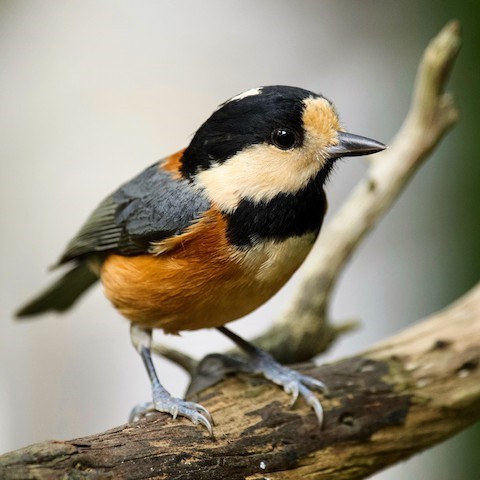
Varied Tit. (Saiko Wild Bird Forest Park, Fujikawaguchiko, Yamanashi, Honshu, Japan; October 2, 2019.) © Jeremy Ballard
The head pattern consists of a black crown and bib with buffy cheeks and forehead. The black crown has a white central stripe from the peak to the nape. The black bib extends down to cover most of the chest.

Varied Tit, showing white central crown stripe. (Changgyeonggung, Seoul, South Korea; January 24, 2021.) © Robert Cousins
The upperparts are mostly bluish-gray, with a chestnut crescent across the upper back. The underparts are mostly chestnut or rusty with a paler median strip and a buffy crescent on the chest.
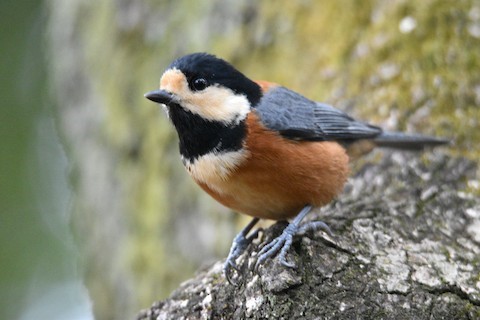
Varied Tit, showing pale median strip on underparts. (Yoyogi Park, Tokyo, Japan; December 30, 2019.) © Wind Edward Kim

Varied Tit, S. v. amamii—with a richer cinnamon wash replacing buffy plumage. (Amami Nature Forest, Amami, Japan; September 14, 2020.) © Yann Muzika
Notes
Polytypic species consisting of five recognized subspecies, one of which (orii of the Daito Islands) went extinct in the 1970s or ‘80s. Traditionally considered conspecific with Owston’s Tit (owstoni) of the southern Izu Islands, Iriomote Tit (olivaceus) of Iriomote and Ishigaki-jima in the southern Ryukyus, and Chestnut-bellied Tit (castaneoventris) of Taiwan.
More Images of Varied Tit

Varied Tit. (Gakhwa Reservoir, Kwangju-Kwangyokshi, South Korea; February 28, 2014.) © Patrick J. Blake
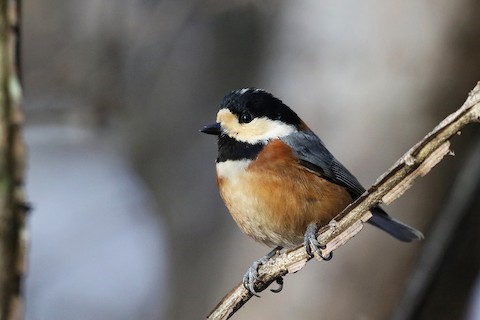
Varied Tit. (Karuizawa, Nagano, Honshu, Japan; January 29, 2018.) © Charley Hesse
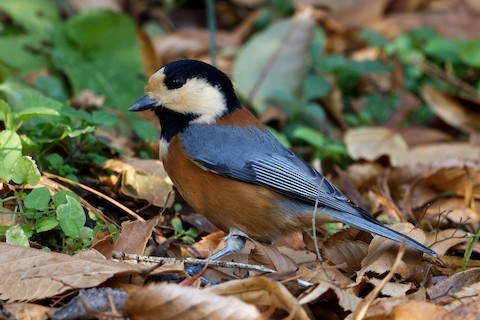
Varied Tit. (Gwangneung Arboretum, Kyonggi-do, South Korea; December 7, 2021.) © Robert Cousins
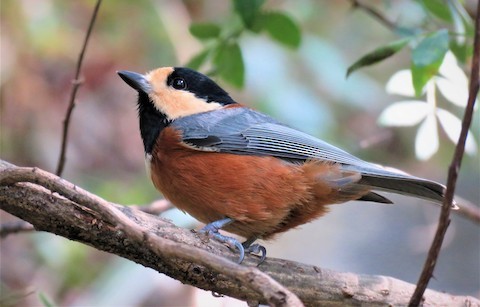
Varied Tit. (Gapcheon Stream and Forest, Daejeon, South Korea; October 1, 2020.) © Elizabeth Skakoon

Varied Tit. (Yoyogi Park, Tokyo, Japan; January 2, 2020.) © Elizabeth Irwin
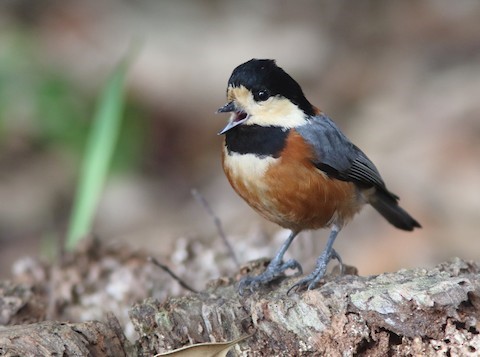
Varied Tit. (Shinjuku Gyoen National Garden, Tokyo, Japan; February 22, 2018.) © William Price
References
BirdLife International. 2017. Sittiparus varius (amended version of 2016 assessment). The IUCN Red List of Threatened Species 2017: e.T103758876A112809007. https://dx.doi.org/10.2305/IUCN.UK.2017-1.RLTS.T103758876A112809007.en. (Accessed January 25, 2022.)
Brazil, M. 2009. Birds of East Asia. Princeton University Press.
eBird. 2022. eBird: An online database of bird distribution and abundance. Cornell Lab of Ornithology, Ithaca, N.Y. http://www.ebird.org. (Accessed January 25, 2022.)
Harrap, S., and D. Quinn. 1995. Chickadees, Tits, Nuthatches & Treecreepers. Princeton University Press.
Pyle, R.L., and P. Pyle. 2017. The Birds of the Hawaiian Islands: Occurrence, History, Distribution, and Status. Version 2 (January 1, 2017). http://hbs.bishopmuseum.org/birds/rlp-monograph/. B.P. Bishop Museum, Honolulu, Hawaii.
Xeno-Canto. 2022. Varied Tit – Sittiparus varius. https://xeno-canto.org/species/Sittiparus-varius. (Accessed January 25, 2022.)
